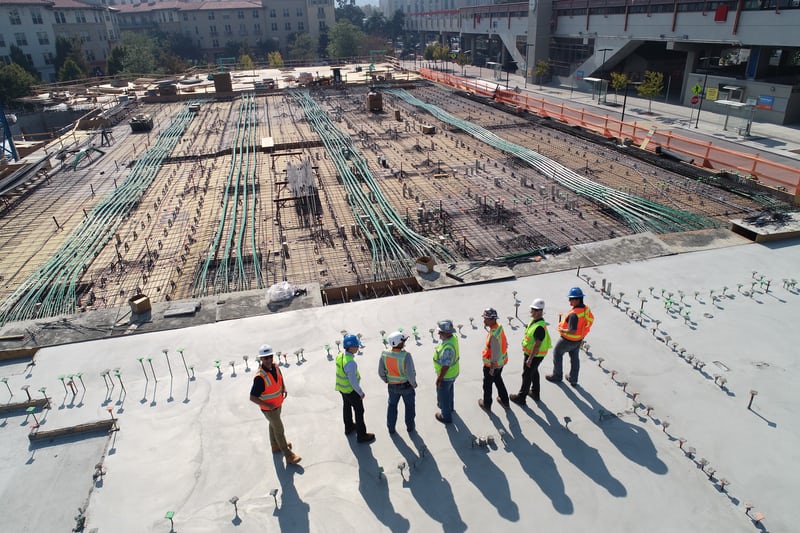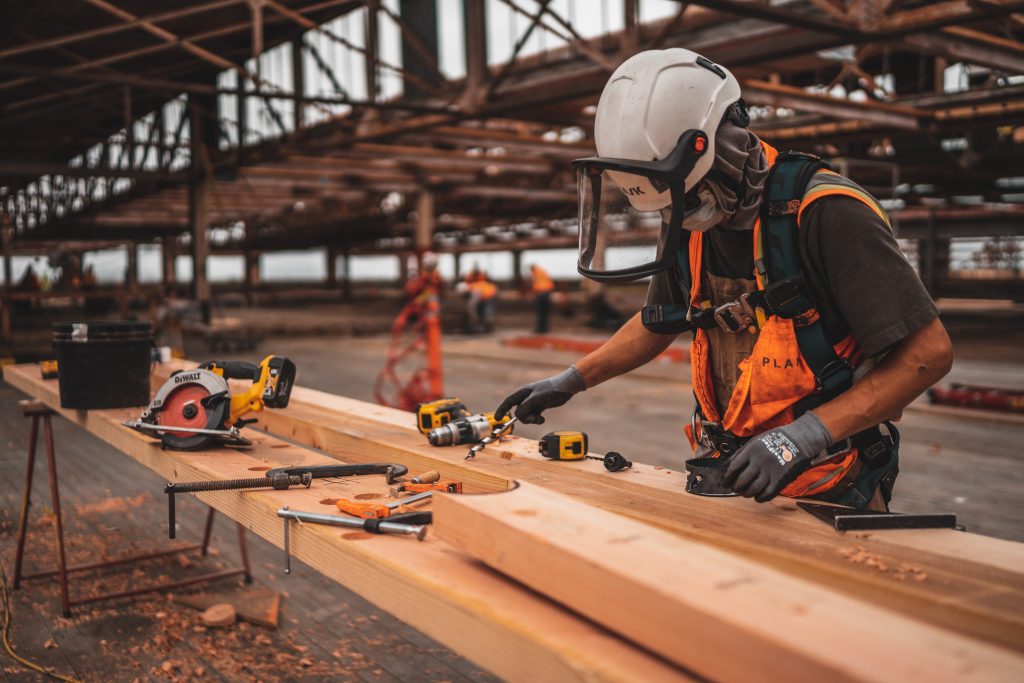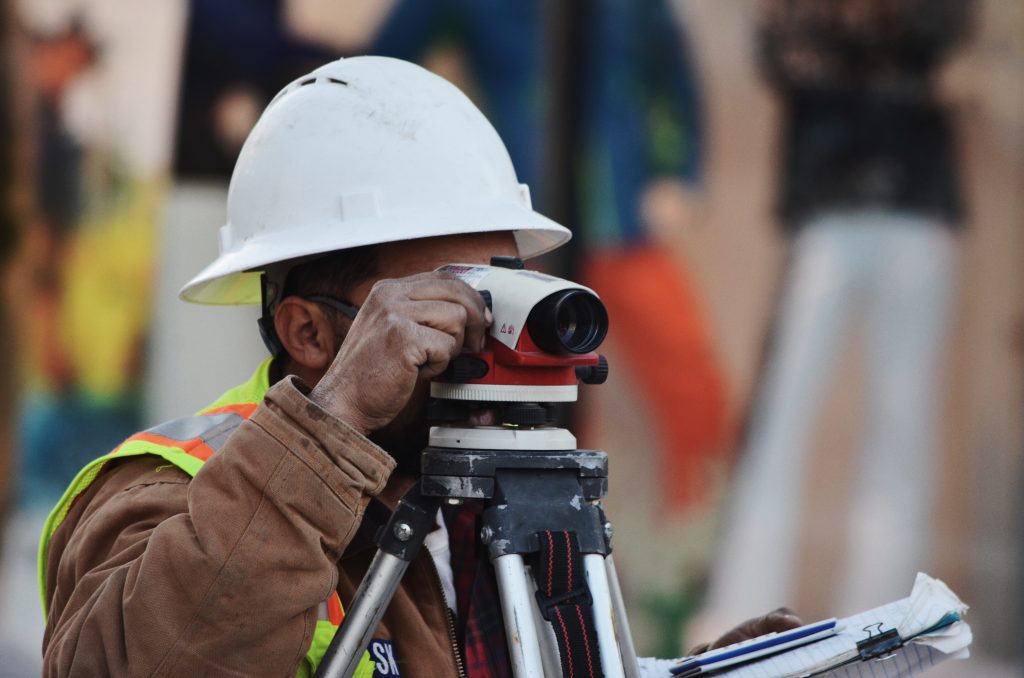
How safe is your construction site? According to the Occupational Safety and Health Administration (OSHA), one in five worker deaths in 2019 occurred in the field of construction. While construction job site safety is naturally your most important concern, an unsafe worksite can impact your company in multiple other ways. From delayed projects to legal strife and an increased risk of theft.
Fortunately, there are a number of ways you can make your job site safer today. Here are the areas you should prioritize.
Determine if you are covered legally.
Have the proper paperwork for a legitimate construction business.
While each state or municipality might have its own requirements, find out what licenses and coverages you need, such as a general contractor’s license; a specialty contractor’s license for specific tasks, such as roofing or electrical; a business license; and insurance, including liability and workers’ compensation. Confirm your documents are up to date and meet all the requirements of the area where you are doing business.
Sign contracts before you commit to a job.
Sign all contracts before you break ground. This includes payment details, terms, and scheduled dates of completion for various phases of the work. It’s wise to have an attorney look over any contracts to make sure you’re not missing important aspects that could cause trouble down the line.
Prepare your site with the supplies you need.
Adequate equipment entails far more than just machinery, tools, and vehicles. Workers can’t perform their roles safely if they don’t have the proper safety apparatuses. Here’s a checklist to guide you on what you need:
- Bird and animal diversion: Birds and animals can cause a number of safety hazards, from endangering your workers to creating unhealthy conditions due to droppings. And if birds nest on your site, it could cost you: The Federal Migratory Bird Act from the U.S. Fish & Wildlife Service forbids you from moving or destroying a nest that has eggs, chicks, or young birds in it. Check to see if nearby trees are nest-free and use bird diverters to improve the chances that they remain that way.
- Marking systems for low power lines, poles, towers, transformers, and other low-hanging, high-voltage equipment: Get the right power line markers for your site to protect your workers as well as the community at large.
- Safety signage: Check local laws to make sure your site has adequate signage, including danger and warning signs, directional signage, general safety signs, and fire safety signs. Find out if there are other types of signage that might be required or suggested.
- Job site information board: Create one central location where important emergency numbers are listed for local fire, police, and medical. Include contact information for your site supervisor and alternate personnel in case there is an emergency.
- First-aid kits: While you should verify local regulations and specific requirements for the type of construction site you’re on, consult this list compiled by the American National Standards Institute (ANSI) and International Safety Equipment Association (ISEA) as the “Minimum Requirements for Workplace First Aid Kits and Supplies.”
- Personal protective equipment (PPE): With COVID protocols still in place, PPE extends beyond hard hats, gloves, and eye and ear protection to masks to keep the crew safe.
- Fire extinguishers: Check whether you have the correct type; for example, here are some general requirements offered by OSHA.
- Fall protection systems: These are some of the most important precautions you can take. Find out what’s recommended for the job you are doing and prioritize frequent training classes and reminders on proper use.
Implement security measures.
While personal safety is top of mind, you also want to ensure your expensive equipment is protected and your site is secure when workers aren’t present. This protects against not only theft but also injury liability. Here are some measures to consider:
- Adequate fencing: This will keep away trespassers and potential thefts from stealing your equipment or damaging the property. It also ensures that no one inadvertently hurts themselves, which could expose you to legal ramifications.
- A locked shed: Put smaller tools away each night in a locked garage or structure to keep them out of sight. Make this step part of your evening routine. This can help keep the crew alert to potential hazards they spot as they clean up.
- A guard: Not every site requires a guard, but if yours is particularly large or high-profile or includes specialty machinery, it might be a wise investment.
- Surveillance equipment: Alternately, consider using video that will alert you to someone’s presence on the site and capture physical evidence. Motion sensor lights can be another key component.
Enforce safety protocols.
While all companies begin a job with the intention of hosting a safe site, constant vigilance is necessary. That entails regularly revisiting safety procedures to encourage personnel to take their role in safety seriously. In fact, OSHA reports that a number of the most frequently cited OSHA standards violated in 2020 happened on construction sites, with fall-related accidents as the top issue. Fortunately, there are steps you can take to make ensure construction job site safety. These include:
- Ensuring only approved personnel are onsite: Always ask anyone visiting the job site for appropriate identification to be sure they belong there. A standard sign-in procedure can reinforce this rule.
- Wearing appropriate safety gear: From COVID-mitigating PPE to bright orange vests and hard hats that protect workers from construction site hazards, it’s vital to always dress appropriately.
- Holding consistent safety briefings: Most companies find that at least a daily base touch is important. As your crew gathers each morning, take time to discuss the day’s goals and quickly review safety protocols. You also could have a more comprehensive weekly meeting to go over a specific issue or item, such as downed power line safety. You can supplement these regular briefings with emails or texts that have a safety tip of the week. The more workers see safety reminders, the better ingrained it will become in your culture.
- Assigning a safety officer for larger projects: A foreman or supervisor has much to attend to on a busy site, and safety can be its own full-time job. Installing a safety officer communicates to your crew and clients that you take this factor seriously.
- Keeping your construction site clean: Many accidents occur on a site with trip and fall hazards. Take care to tape down wires and cords. Keep tools in a central location rather than lying around the site. Make safety a top priority by conducting frequent walk-throughs and inspections. Then do a final round before the crew clears out in the evening.
- Promoting a culture of safety: Remind your team that safety is everyone’s job and no one is too above protocols. Always allow for questions and be open to safety call-outs by any staff member. Model correct behavior by reporting incidents, including near misses and close calls. This gives you the opportunity to rethink processes and procedures.
Being vigilant to potentially unsafe situations should be job No. 1 for all personnel. After all, their lives may depend on it.


